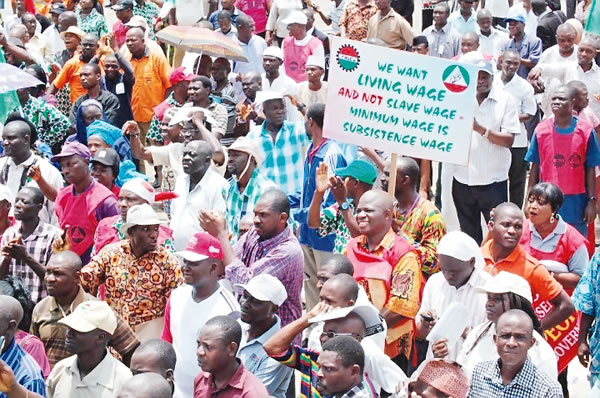
To commemorate the 2024 United Nations Public Service Day, two International Labour Organisation (ILO) experts in the Department of Statistics, Marie-Claire Sodergren, a Senior Economist, Data Production and Analysis Unit, and Rosina Gammarano, a Senior Labour Statistician, Statistical Standards and Methods Units, highlight some facts and importance of the public sector workers to the society. CHRISTIAN APPOLOS brings excerpts.
The public service day is globally celebrated to recognise the value of public servants and their contribution to the sustainability of human society and communities, democracy and good governance. Among many other reasons, the celebration of the day echoes the recognition of the public sector workers value to community service, reward for excellence in the public sector, to encourage public servants to promote innovation and improve professionalism in the public service.

The public sector is believed to be the cornerstone of societies and economies. It ensures the continuous provision of essential goods and services such as education, healthcare, utilities, transport, road infrastructure and mail delivery, among others, while also playing a key role in promoting growth and social justice. At the core of these functions are public sector workers, who serve communities by guaranteeing the operation of vital institutions.
According to International Labour Organisation (ILO) experts in the Department of Statistics, Marie-Claire Sodergren, a Senior Economist, Data Production and Analysis Unit, and Rosina Gammarano, a Senior Labour Statistician, Statistical Standards and Methods Units, the world size of workers in the public sector is just over one-tenth (11 percent) of the world’s employment, according to the latest ILO estimates.
They said: “The share of public sector employment varies from one region to the next, increasing with the level of national income. For instance, 16 percent of employed people work in the public sector in high-income countries, compared to only seven percent in low-income countries. The Arab States region stands out with a particularly large public sector compared to other regions, where it accounts for 25 percent of employment.”
Further stressing the value of public servants to human society, the duo said: “The current context, marked by a recent pandemic, vulnerability to climate change, the cost-of-living crisis and conflicts, the current economic realities has led to a sustained demand for public goods and services. However, most governments have not increased the share of employment in the public sector to meet this demand.
“Over the past decade, the proportion of public sector employment declined in 58 out of 94 countries with data available. Among the 34 countries where the share of public sector employment increased, the median rise was a mere 1.3 percentage points.”
On the economic activities covered by the public sector, Marie-Claire and Rosina said: “Public servants are responsible for delivering essential services that directly impact the lives of individuals and communities. This includes education, healthcare, transportation, social services and public safety. Unsurprisingly, most public sector employment in the world (52 percent) is in non-market services, compared to only 15 percent in the private sector. Public sector workers are also present in market services (20 percent versus 32 percent in the private sector), agriculture (12 percent versus 27 percent) and manufacturing (nine percent versus 15 percent).
“The distribution of public sector employment by sector varies by region and national income level. For example, 72 percent of public sector employment is in non-market services in high-income countries, compared to only 54 percent in low-income countries. Conversely, manufacturing (for example, the manufacture of food products, clothing and textiles) accounts for 31 percent of public sector employment in low-income countries, but only 18 percent in high-income ones.
“Against the backdrop of the recent pandemic, the role of key workers providing essential goods and services gains relevance. In high-income countries, 25 percent of key workers are employed in the public sector. This can translate into more robust support structures and resources for essential services during shocks and emergencies. Contrariwise, in low-income countries, where public sector employment for key workers is notably lower at three percent, the strain on already stretched public services can exacerbate vulnerabilities and hinder effective responses.”
X-raying the occupations of public sector workers, the ILO experts said: “Teaching professionals are the cornerstone of public sector employment. On average, 70 percent of teaching professionals (sub-major group 23 in ISCO-08) work in the public sector and this profession makes up the largest share of employment in the public sector in the vast majority of countries. When that was not the case, occupations in the armed forces (groups 01-03) or protective services workers (group 54) often made up the largest share of public sector employment.
“Beyond teaching and defence roles, other noteworthy occupations with at least one quarter of employment in the public sector include chief executives, senior officials and legislators (group 11), health professionals and associates (groups 22 and 32), legal, social and cultural professionals and associates (groups 26 and 34) and clerks and other clerical support workers (groups 41 and 44). These occupations collectively underscore the diverse spectrum of roles crucial for the functioning of public services.”
They also talked about the demographic profiles of public servants, saying: “Understanding the demographic characteristics of public servants is crucial for assessing the diversity and inclusivity of the public sector workforce. The age distribution of public sector workers is relatively similar to that of the private sector, except for youth. On average, young persons (aged 15 to 24) represent only six percent of public sector employment, compared to 16 percent of private sector employment.
“This can be partly attributed to the higher educational attainment among public sector workers, which means they spend more time in school before entering the workforce. The share of public sector workers with an advanced education is higher than private sector workers in almost all 139 countries with available data, with differences of at least 20 percentage points in 101 of these countries.
“In examining the employment of persons with disabilities across the public and private sectors, there are far fewer countries with available data, making it difficult to draw conclusions. Persons with disabilities have lower employment rates overall and their shares in the public sector also tend to be small.
“However, there is some evidence in the European Union that persons with disabilities are better represented in public administration (a subset of the public sector) than in other sectors. This indicates that the public sector can provide important employment opportunities for persons with disabilities.”
Gender pattern was another area the duo looked into in their analysis of the important role of public sector workers. They said: “Globally, women face significant barriers to accessing paid work and are thus under-represented in employment. Indeed, women are only 39 percent of the world’s private sector workers. However, women are much better represented in public sector employment, accounting for 47 percent of all public servants.
“Related to this, globally, the share of public sector employment is higher for women (13 percent) than for men (10 percent). This holds true in all regions except Africa. The difference is most pronounced in the Arab States and Europe and Central Asia regions, where the share for women is about seven percentage points higher than the share for men. In high-income countries, the share of public sector employment is 20 percent for women compared to 13 percent for men.
“Equal access to decision-making positions, especially in the public sector, is essential to achieving decent work and the 2030 Agenda for Sustainable Development. Indeed, diversity and inclusion at high decision-making levels trickles down creating greater impact. However, when it comes to gender parity, women are still underrepresented at all levels of decision-making worldwide. In 2024, 26.9 percent of national parliament seats around the world were held by women (SDG indicator 5.5.1).
“The glass ceiling persists, both in the private and public sectors. Nonetheless, the female share of managerial positions is higher in the public sector (32 percent) than in the private sector (27 percent). This holds true in all regions except Africa and all income groups except low-income countries.
“The female share in other occupations was also higher in the public sector across all major groups except service and sales workers. Also noteworthy is that gender-based occupational segregation in the public sector is similar to that of the private sector, with high concentrations of women in care-related occupations for example. The public sector can act not only as a driver of employment creation, but also of gender parity, women’s labour integration and inclusion.”
On the area of conditions in the public sector, they said public sector jobs are typically considered to be secure and stable. “Unsurprisingly, most public sector workers in the world (77 percent) hold employee jobs. However, this still means that almost a quarter of public servants are self-employed, including as own-account workers or dependent contractors. The share of public sector workers who are self-employed changes considerably across regions and income groups. For instance, it ranges from a mere 3.6 percent in high-income countries to as much as 37.2 percent in lower-middle-income countries.
“Also, the public sector seems to give solid guarantees of formal jobs. In almost all countries with data, the informality rate is higher in the private sector than the public sector, with the unweighted average difference being 50 percentage points and the median difference being 54 percentage points. The difference increases with the level of national income. That is, in low-income countries with a higher prevalence of informality, the effect of the public sector in protecting workers against informality becomes stronger.
“Meanwhile, there is a misconception that public servants normally work fewer hours than those employed in the private sector. Average weekly hours of persons employed in the public sector are higher in 47 out of 115 countries. Nonetheless, the share of employed persons working excessive hours, defined as 49 or more hours per week, was lower in the public than private sector in most countries (107 out of 124).
“When it comes to earnings, there is a notable premium for public sector workers in 69 of 81 countries, with median hourly earnings in the public sector being 36 percent higher than those in the private sector. While this could be attributed to the higher educational attainment and skill levels of public sector workers in many countries, it holds true for each of the occupational major groups.
“Moreover, the gender pay gap is much less significant in the public sector. The median pay gap in the private sector is 12 percent, compared to a median close to 0 in the public sector, underscoring the public sector’s role in promoting gender parity. The smaller gender pay gaps in the public sector are linked to the fact that the public sector pay premium is higher for women than for men in 66 of 81 countries with available data.”
In summation, they said: “The public sector plays a central role in the provision of essential goods and services as well as in promoting growth, social cohesion and communal well-being. It relies on its diverse workforce spread across economic activities and occupations.
“Additionally, the public sector appears better equipped to address typical labour market inequalities, such as overall access to employment, access to managerial positions and disparities in working time and pay. As such, the public sector can act as a lighthouse for other employers, guiding the promotion of sustainable and inclusive growth with equal opportunities for all workers.”
Quote
ALSO READ: Aiye-ko-ooto’s ‘The Noble Warrior’ celebrates Soyinka







